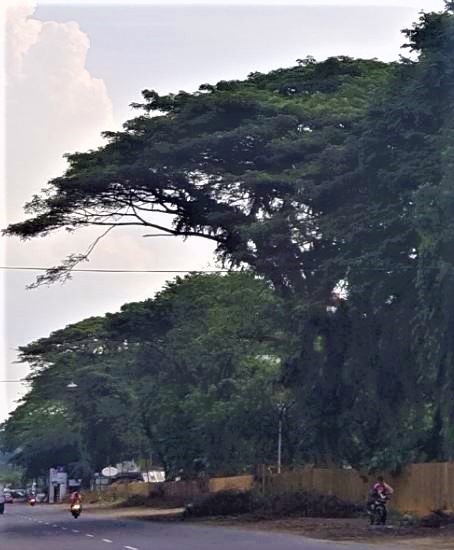Suar trunk tables - an eye-catcher in your home
What is the descent of Suar Wood?

Suar wood comes from a giant fast-growing tree that grows in tropical areas around the equator, including Indonesia. This botanical name for this tree species is "Saman Samanea” but in Indonesia is also commonly referred to as the African shade tree. After all, the tree species would have been imported from Africa at the time.
Why do some people call it the "shadow tree"?
The name "shadow tree" speaks for itself: the gigantic broad crown of the tree provides a beautiful shadow roof. The tree grows to a height of 25 meters and the crown can grow to a diameter of 40 meters. Yes, huge. That is why this type of wood is so popular for making tree trunk tables, both the "round" made from the trunk's sliders and the "rectangular" that are sawn lengthwise from the trunk or heavy crown branches. Few other tree species offer this possibility.
Is suar wood sustainable?
The advantage of the suar tree is that the tree grows very quickly. This tree species is therefore neither protected nor endangered. Notwithstanding this, our suppliers always provide the V-label "Legal wood" certificate, which means that the wood has been harvested in a sustainable legal manner according to the rules of The European Timber Trade Federation.
What is the typical look of suar wood?
The wood is particularly strong because of the structure of the wood. With most varieties of wood, the sapwood (part between the bark and the heartwood) is very soft and cannot be used for furniture.
With SUAR wood, the sapwood is also softer than the heartwood, but still sufficiently hard and strong to process. This gives you the very typical edges that are white / cream colored while the rest of the wood is much darker. This gives you a “real” tree trunk table that everyone is dreaming of.
Has the wood been sufficiently dried?
A particularly good question because if you want to have a nice table for a long period of time, it is important that the wood is dried slowly and sufficiently so that the resins are hardened out.
If the wood is dried in a correct and natural way, it is a tropical type of wood that can be used in drier climates such as in Western Europe. We purchase our SUAR wood from suppliers who lets all the wood dry naturally. It’s an art by itself! So yes, we do let the slabs dry in their normal habitat and we choose our pieces of wood ourselves on the “dry meadow” of our selected suppliers. This guaranties quality slabs for our tables and avoids negative surprises in a later stage.
Does wood continue to work?
Yes, just like any type of wood, SUAR wood will continue to work at your home, especially in the case of high temperature or humidity fluctuations. It is therefore important to keep the humidity in the home sufficiently high and stable.
It is true that SUAR wood “lives” much less compared to many other varieties of wood such as beech or oak, but wood remains alive. It is therefore perfectly normal for the table to get cracks after a while, usually at the table ends. Existing sheds and cracks can therefore also become larger and smaller over time.
Slight deformations can also occur, which can cause height differences or the table to be no longer perfectly leveled, especially at the height of cracks or where the table already has natural deformations or openings. Wood is a natural and living product where the working of the wood is an inherent part of the product. It gives the SUAR table an extra character. If certain deformations or cracks are disturbing, it is of course always possible to soften the edges or to sand down the differences in level and then to update the protection (oil or varnish) again.
This is perfectly normal and is one of the typical characteristics of a tree trunk table.